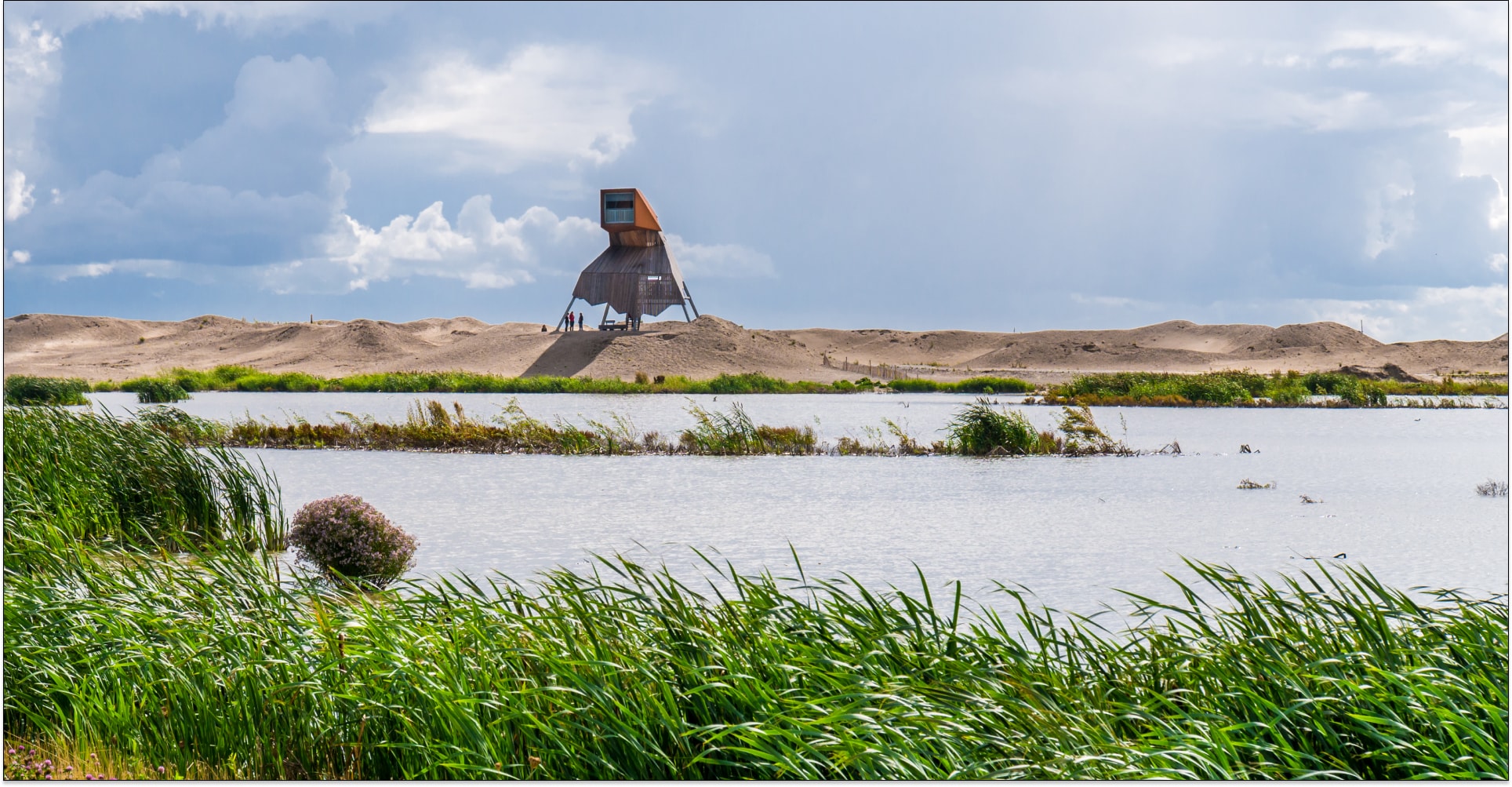The climate is changing. The unprecedented speed at which this is occurring and impacting events – like flooding, storms and extreme heat – most definitely is a cause for alarm. Just last year, human-induced climate change made European flooding 1.2 to 9 times more likely1 than it would have been 100 years ago. This acceleration makes it more difficult for societies and the natural world to adapt. But there are solutions. At the recent Marker Wadden conference, I met with experts and leaders from across the globe to discuss creative and resilient nature-based solutions that meet these goals.
Adaptive systems that consider both the needs of the community and the natural environment are the key to climate resilience. This is why solutions that account for ecosystem restoration and climate adaptation together are becoming increasingly important in the coming century.
The Marker Wadden, a manmade archipelago of islands in the Dutch Lake Marken, is one such example. Arcadis helped design and develop the archipelago of new islands which now function as a nature reserve, where vegetation can grow, fish can spawn, and birds and other wildlife can flourish.
Nature-based solutions that address climate change are often perceived as complex and expensive. This doesn’t need to be the case. During the three day Marker Wadden conference, we used this unique, landmark project to discuss some of the challenges and benefits – like making use of natural materials that are easily available. Here are five key takeaways.
-
Adapting to what nature has to offer
The Dutch marine ecosystem provides an abundance of good quality and clean sand. However, that’s not a common feature in every part of the world. The Marker Wadden made use of mud and silt, demonstrating that solutions are possible with the different natural materials that are available, increasing the applicability and affordability in other parts of the globe. Equally important is ensuring there are mechanisms in place to monitor and analyze these solutions in a new project. There are still some uncertainties on environmental impacts, on subsidence and on biodiversity development, and these need to be taken into account.
-
Considering the wider ecosystem
While nature-based solutions like Marker Wadden can be effective – as proven by the international recognition it has gained - nature-based solutions are also intrinsically linked with their ecosystems. And no two ecosystems are alike. This makes it difficult to replicate the exact solutions from one project to another. It is very important to keep the local environment, economy, communities and risk policies in mind when designing and implementing projects in an area. What can be taken forward are the key considerations and steps taken to develop project frameworks.
-
Climate mitigation and adaptation go hand-in-hand
During my joint workshops on ‘nature-based solutions’ with Deltares’ Science Director Bregje Wesenbeeck we analyzed how and where climate adaptation combined with mitigation can create value. The areas that are most favorable for natural carbon capturing are coastal ecosystems. These are often also most vulnerable to the impacts of climate change.
Seagrasses, mangroves, salt marshes and algae comprise up to 50% of global carbon storage with only 2% of surface. Mangroves can protect against the impacts of sea level rise in the tropical zones. At the same time, they can capture substantial amounts of carbon dioxide, creating new jobs and generating revenues for local communities. Planting seagrass offers another low cost, high impact solution. But it has become extinct in Western Europe. We need to look at ways to restore this valuable ecosystem and efficient carbon storage solution.
-
Staying flexible to hybrid solutions in urban spaces
Multifunctional solutions are not always completely nature based. In urban areas for instance, nature-based solutions simply cannot fulfill all safety requirements. Here, we need hybrid solutions that combine nature with hard structures. In such cases, we need to start looking at what parameters are considered ‘acceptable’ for additional CO2 production, in return for more safety? And is this something that we can easily calculate?
In Brazil, for example, we have an innovative solution called the ‘Green Metrics Analytics’, which calculates the carbon emission equivalent generated in each phase of a project, including the lifecycle of the materials used. The results are visualized in an interactive dashboard, allowing for the identification of gaps and opportunities for improvement. The tool is now being rolled out across several of our environmental remediation projects in Brazil and the United States. The ability to identify operational points of attention where greenhouse gas emissions occur in such projects helps enable the search for more sustainable, potentially nature-based alternatives.
-
Ensuring no one is left behind
The Western world needs to invest more in climate adaptation in the Southern Hemisphere, to help the most vulnerable countries. Here, the right balance is in finding low-cost solutions that deliver high impacts. Solutions that are nature-based and multifunctional, contributing to carbon capture and adding value for local stakeholders and the economy through job creation. The coming COPs on ‘biodiversity’ in Montreal and ‘climate change’ in Egypt will be best placed to further the discussion on the added advantages of equitable, nature-based solutions.
Paving a new way of designing future projects
Looking at the future, there are considerable uncertainties. Therefore, strategies and projects need to remain flexible and adaptive. Ensuring there is room to alter solutions or even tap into new opportunities when new technologies or predictions on climate change emerge. The need of the hour is to start the conversation in these areas, share best practices, and turn what we’ve learnt into actionable frameworks. Making sure that projects like the Marker Wadden will not be one-offs, but the beginning of a new global way of thinking around nature-based solutions.
I look forward to accelerating the discussion (and solutions) towards just that in the lead up to COP27 this November. What will you take forward?
1 Study conducted by WWA





